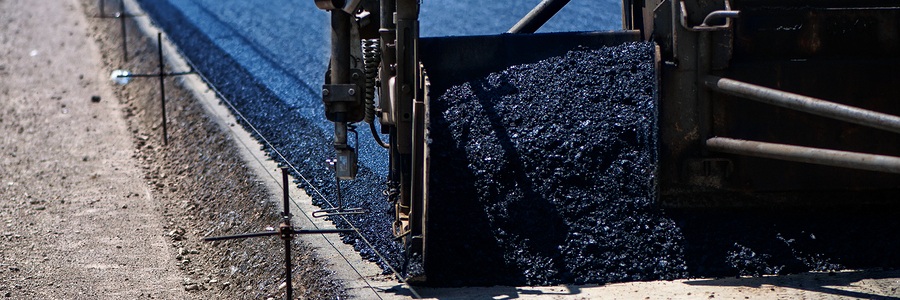Fascination About A1 Professional Asphalt & Sealing Llc
Some Of A1 Professional Asphalt & Sealing Llc
Table of ContentsAn Unbiased View of A1 Professional Asphalt & Sealing LlcSome Known Incorrect Statements About A1 Professional Asphalt & Sealing Llc The Best Strategy To Use For A1 Professional Asphalt & Sealing Llc4 Easy Facts About A1 Professional Asphalt & Sealing Llc Explained10 Simple Techniques For A1 Professional Asphalt & Sealing Llc

The oil in an automobile engine is not just oil. It contains a range of ingredients to boost the car's efficiency. These include polymers, viscosity modifiers, warmth stabilizers, extra lubricants, and put on additives. The REOB includes all the additives that remained in the waste oil as well as the wear steels from the engine (primarily iron and copper).
By making lots of blends utilizing various REOB examples and various asphalt binders, the variations mostly can be balanced out. Several States offered samples of recognized REOB composition to TFHRC scientists, that analyzed the samples to contrast the percent of added (known) REOB to the discovered (checked) quantity. The analyses revealed a similar percentage of included and found REOB.
Indicators on A1 Professional Asphalt & Sealing Llc You Should Know
None of those States recognized that the asphalt they were purchasing contained REOB. One State urged its samples had no REOB - https://www.metal-archives.com/users/a1asphaltseal.
Of the 1,532 samples evaluated, 12 percent consisted of REOB, and some included considerably high levels of it at 1020 percent. The greatest level was 34 percent in an example from Texas, which TxDOT had made use of in a patching substance. This testing likewise revealed the visibility of phosphoric acid in 11 percent of the examples, and 2 percent consisted of ground tire rubber.
Two years ago at TRB's annual conference, the Federal researchers held an REOB workshop and presented the searchings for of their research laboratory evaluations to a standing room-only crowd. Some firms do not especially prohibit REOB, they do enforce physical tests that avert its useeffectively a restriction. Others do not prohibit it by requirements, yet have contracts with asphalt distributors to stay clear of making use of REOB
Rumored Buzz on A1 Professional Asphalt & Sealing Llc
A handful do enable REOB, some within specific limitations. As an example, Ohio and Texas limitation degrees to less than 5 percent of the asphalt. To develop a dependable examination technique that all States can make use of, the TFHRC scientists set up a round-robin examination plan. The participants are 11 State highway firms (Illinois, Massachusetts, Minnesota, Mississippi, Montana, North Carolina, Oklahoma, South Carolina, Texas, Vermont, and Wyoming), 2 independent screening laboratories, the Ministry of Transportation in Ontario, Queen's College in Ontario, and an Ontario paving professional.
In total, the researchers prepared and delivered 720 blends. The individuals are examining the examples separately utilizing the guidelines supplied by anonymous the TFHRC researchers. The round-robin screening is virtually completed, and TFHRC is in the process of collecting the outcomes. The result will be a recommended AASHTO test method that any kind of State can take on and make use of (what is cold asphalt?).
The sidewalk with REOB, which lies 0.6 mile (1 kilometer) from the pavement without REOB, has the same subgrade, web traffic density, and environment. The section of Highway655 with 5 to 10 percent REOB showed significant splitting. In this example, the presence of REOB was the determined root cause of breaking at a reduced temperatures.
"In our experience in Canada, even tiny quantities of 23 percent can be a trouble." An area of test sidewalk in Minnesota (MN1-4) discovered to consist of REOB additionally cracked too soon. The sidewalk done well for the very first 3 to 4 years, yet then began to break. This sidewalk is additionally subject to reduced temperatures.
Not known Details About A1 Professional Asphalt & Sealing Llc
The tests were not substantial, however they revealed that at degrees of 6 percent or more, the tensile strength of the asphalt dropped considerably. At a degree of 3.5 percent REOB, the variant in the physical examination methods was more than the effect of REOB. In reality, it was hard for scientists to analyze whether REOB existed.

One binder parameter thought about is the distinction in between the reduced temperature level vital requirements temperature level for stiffness (S) in the flexing beam of light rheometer and the bending beam rheometer creep slope (m-value) kept in mind as Tcritical. TC = TC (S) TC (m-value). Assessment of this specification is still ongoing. Two independent research teams, one from AASHTO and the other from the Asphalt Institute, wrapped up that more research is needed on using REOB in asphalt.
Formerly, all asphalt testing measured engineering homes such as tightness. These tests do not reveal what materials had actually been added to the asphalt. One example gotten throughout the TFHRC research study had a very weird analysis. The example had the complying with test results: Superpave PG 64-28 with a heat quality of 67.3 Tcritical on the bending light beam rheometer was 6.7 degrees Celsius.

The smart Trick of A1 Professional Asphalt & Sealing Llc That Nobody is Talking About
These outcomes show there are weak points in the standard design screening protocols that may be exploited. The producer may have an economic benefit and the item passes all the standard examinations, yet the product might not be valuable to ensuring long-term efficiency. To address this concern and the development of brand-new asphalt additives and extenders, TFHRC is beginning a study program to make use of handheld spectroscopic devices, x-ray fluorescence spectroscopy, and Fourier transform infrared spectroscopy to enable evaluations to be done in the area as opposed to having to take examples back to the laboratory.